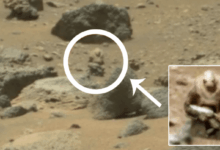Jupiter’s Moon IO Has Started To Send The Juno Probe Messages
Astronomers have detected a mysterious and powerful burst of radio waves—one of the most distant and energetic signals ever observed. While it might sound like the premise of a science fiction thriller, this is a real and natural phenomenon. What’s even more intriguing is its source: Io, one of Jupiter’s moons and the most volcanically active body in our solar system.
NASA’s Juno spacecraft, which has been orbiting Jupiter since 2016, is the key to this discovery. Thanks to Juno’s cutting-edge instruments, scientists were able to pick up structured radio signals coming from Io. The detection wasn’t random; it revealed a clear, energetic pattern linked directly to the moon’s intense volcanic activity. But what could be causing these signals, and what secrets do they hold?
To understand the significance, we need to look at Juno’s mission. Launched in 2011, Juno was designed to explore Jupiter’s atmosphere, magnetic field, and internal structure. It flies closer to the gas giant than any spacecraft before, enduring extreme radiation and capturing high-resolution data. Juno doesn’t just study Jupiter—it also conducts close flybys of the planet’s largest moons, including Ganymede, Europa, and Io.
Io is unlike any other moon. Its surface is a chaotic landscape of active volcanoes, massive lava flows, and colorful sulfuric plains that are constantly reshaped. Unlike Earth, where eruptions happen occasionally, Io is in a constant state of geological upheaval. Its volcanic plumes are so massive they can be seen from Earth.
This relentless activity is driven by a process called tidal heating. Locked in a gravitational tug-of-war between Jupiter and its neighboring moons, Io is constantly stretched and squeezed. The resulting friction generates tremendous heat, melting rock beneath the surface and fueling continuous eruptions.
But Io’s eruptions don’t just affect the moon—they have a profound impact on the entire Jovian system. As volcanoes spew gas and particles into space, these materials become trapped in Jupiter’s powerful magnetic field. This creates a massive electric circuit known as the Io-Jupiter flux tube, generating intense radio emissions. These aren’t faint whispers; they’re structured, high-energy bursts that Juno’s instruments can clearly detect.
What makes these emissions so fascinating is their precision. They follow specific patterns, and their strength can be predicted based on Io’s position in its orbit. When Io moves through certain regions of Jupiter’s magnetosphere, the interaction intensifies, producing the strongest signals.
These radio waves carry valuable information. By analyzing them, scientists can better understand Jupiter’s magnetic environment, plasma interactions, and energy transfer mechanisms. It’s as if Io is continuously broadcasting data about its extreme surroundings.
Juno’s wave instrument was specifically designed to detect these kinds of electromagnetic signals. During one of its close flybys, it passed through a zone of intense activity and captured a detailed sequence of emissions. This not only confirmed long-held theories but also revealed new details—showing that these emissions are more dynamic and powerful than previously thought.
What’s even more remarkable is that these interactions are unique. No other moon in the solar system has such a direct, energetic connection with its planet. If we could see radio waves with our eyes, the connection between Io and Jupiter would look like a giant, invisible lightning bolt stretching across space.
Io’s radio signals open a window into understanding not just our solar system, but also distant exoplanets with strong magnetic fields. Could similar signals help us detect volcanic activity on faraway worlds? If so, Juno’s discovery could be the first step toward an entirely new method of planetary exploration.
In the end, Io is not just a moon—it’s a dynamic, electrified world whose volcanic fury sends messages across the cosmos. And thanks to Juno, we’re finally starting to listen.




